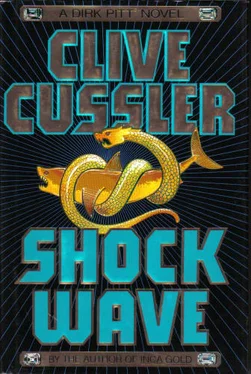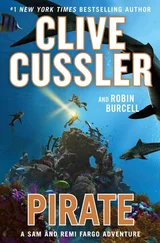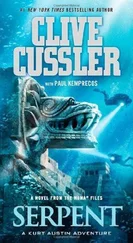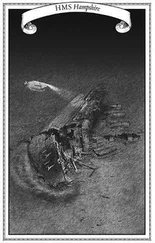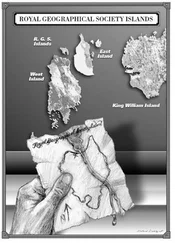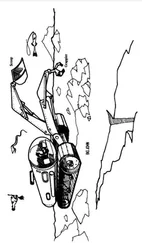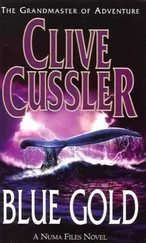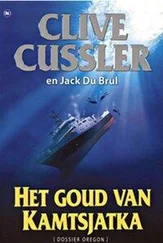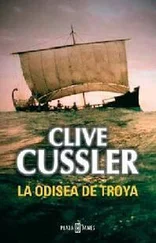Clive Cussler - Shock Wave
Здесь есть возможность читать онлайн «Clive Cussler - Shock Wave» весь текст электронной книги совершенно бесплатно (целиком полную версию без сокращений). В некоторых случаях можно слушать аудио, скачать через торрент в формате fb2 и присутствует краткое содержание. Год выпуска: 1996, ISBN: 1996, Издательство: Simon & Schuster, Жанр: Детектив, на английском языке. Описание произведения, (предисловие) а так же отзывы посетителей доступны на портале библиотеки ЛибКат.
- Название:Shock Wave
- Автор:
- Издательство:Simon & Schuster
- Жанр:
- Год:1996
- ISBN:978-0684802978
- Рейтинг книги:5 / 5. Голосов: 1
-
Избранное:Добавить в избранное
- Отзывы:
-
Ваша оценка:
- 100
- 1
- 2
- 3
- 4
- 5
Shock Wave: краткое содержание, описание и аннотация
Предлагаем к чтению аннотацию, описание, краткое содержание или предисловие (зависит от того, что написал сам автор книги «Shock Wave»). Если вы не нашли необходимую информацию о книге — напишите в комментариях, мы постараемся отыскать её.
Shock Wave — читать онлайн бесплатно полную книгу (весь текст) целиком
Ниже представлен текст книги, разбитый по страницам. Система сохранения места последней прочитанной страницы, позволяет с удобством читать онлайн бесплатно книгу «Shock Wave», без необходимости каждый раз заново искать на чём Вы остановились. Поставьте закладку, и сможете в любой момент перейти на страницу, на которой закончили чтение.
Интервал:
Закладка:
Clive Cussler
Shock Wave (Dirk Pitt Adventures—13)
Arthur Dorsett: An ugly, hulking giant of a man, head of the world’s second largest diamond empire, he has the personality of a pit bull and a sneering disdain for any human weakness. His master plan will destroy the global diamond market—and net him billions...
Maeve Fletcher: Dorsett’s lithe and lovely blond daughter rebelled against laboring in her father’s mines, changing her name and earning her master’s degree in zoology without a penny of his fortune. But now her father has ordered her to spy on Dirk Pitt and NUMA, seizing the ultimate motivators—her twin six-year-old sons...
Mason Broadmoor: A revered totem-pole carver of Canada’s Haida Indian tribe, he smuggled Pitt into the Dorsett mine on Kunghit Island where Pitt unlocked the key to the murderous blasting operations—and was captured by Dorsett’s thugs. But Broadmoor’s daring rescue gave him the ride of his life...
Boudicca Dorsett: A towering Amazon beauty with the imperious poise of a tigress, she is in charge of security operations for Dorsett Consolidated Mining Limited. Her physical strength far surpasses that of most men, and her sadistic streak is rivaled only by her father’s...
Deirdre Dorsett: A glamorous woman with copper hair and the flair of a fashion model, she is vividly attractive to Dirk Pitt, until he perceives that her sensuality and sophistication conceal a heart as cold as polar ice...
Hiram Yaeger: The iconoclastic chief of NUMA’s computer network is filled with horror when a magnificent new graphics program targets the next area to be rocked by Dorsett’s revolutionary mining technique...
RAFT OF THE GLADIATOR
January 17, 1856
The Tasman Sea
Of the four clipper ships built in Aberdeen, Scotland, in 1854, one stood out from the others. She was the Gladiator, a big ship of 1,256 tons, 198 feet in length and a 34-foot beam, with three towering masts reaching for the sky at a rakish angle. She was one of the fleetest of the clippers ever to take to the water, but she was a dangerous ship to sail in rough weather because of her too fine lines. She was hailed as a “ghoster,” having the capability of sailing under the barest breath of wind. Indeed, the Gladiator was never to experience a slow passage from being becalmed.
Unfortunately, and unpredictably, she was a ship destined for oblivion.
Her owners fitted her out for the Australian trade and emigrant business, and she was one of the few clippers designed to carry passengers as well as cargo. But as they soon discovered, there weren’t that many colonists who could afford the fare, so she was sailing with first- and second-class cabins empty. It was found to be far more lucrative to obtain government contracts for the transportation of convicts to the continent that initially served as the world’s largest jail.
The Gladiator was placed under command of one of the hardest driving clipper captains, Charles “Bully” Scaggs. He was aptly named. Though Scaggs did not use the lash on shirking or insubordinate crewmen, he was ruthless in driving his men and ship on record runs between England and Australia. His aggressive methods produced results. On her third homeward voyage, Gladiator set a sixty-three-day record that still stands for sailing ships.
Scaggs had raced the legendary captains and clipper ships of his time, John Kendricks of the fleet Hercules and Wilson Asher in command of the renowned Jupiter, and never lost. Rival captains who left London within hours of the Gladiator, invariably found her comfortably moored at her dock when they arrived in Sydney Harbor.
The fast runs were a godsend to the prisoners, who endured the nightmarish voyages in appalling torment. Many of the slower merchant ships took as long as three and a half months to make the voyage.
Locked belowdecks, the convicts were treated like a cargo of cattle. Some were hardened criminals, some were political dissidents, all too many were poor souls who had been imprisoned for stealing a few pieces of cloth or scraps of food. The men were being sent to the penal colony for every offense from murder to pickpocketing. The women, separated from the men by a thick bulkhead, were mostly condemned for petty theft or shoplifting. For both sexes there were few conveniences of any kind. Skimpy bedding in small wooden berths, the barest of hygienic facilities and food with little nutrients was their lot for the months at sea. Their only luxuries were rations of sugar, vinegar and lime juice to ward off scurvy and a half-pint of port wine to boost their morale at night. They were guarded by a small detachment of ten men from the New South Wales Infantry Regiment, under the command of Lieutenant Silas Sheppard.
Ventilation was almost nonexistent; the only air came from hatchways with solidly built grills that were kept closed and heavily bolted. Once they entered the tropics, the air became stifling during the blazing hot days. They suffered even more during rough weather, cold and wet, thrown about by the waves crashing against the hull, living in a state of virtual darkness.
Doctors were required to serve on the convict ships, and the Gladiator was no exception. Surgeon-Superintendent Otis Gorman saw to the prisoners’ general health and arranged for small groups of them to come on deck for fresh air and exercise whenever the weather permitted. It became a source of pride for surgeons to boast, when finally reaching the dock in Sydney, that they hadn’t lost a prisoner. Gorman was a compassionate man who cared for his wards, bleeding them when required, lancing abscesses, dispensing treatment and advice on lacerations, blisters and purges, also overseeing the spreading of lime chloride in the water closets, the laundering of clothes and the scouring of the urine tubs. He seldom failed to receive a letter of thanks from the convicts as they filed ashore.
Bully Scaggs mostly ignored the unfortunates locked below his decks. Record runs were his stock in trade. His iron discipline and aggressiveness had paid off handsomely in bonuses from happy shipping owners while making him and his ship immortal in the legends of clipper ships.
This trip he smelled a new record and was relentless. Fifty-two days out of London, bound for Sydney with a cargo of trade goods and 192 convicts, 24 of them women, he pushed Gladiator to her absolute limits, seldom taking in sail during a heavy blow. His perseverance was rewarded with a twenty-four-hour run of an incredible 439 miles.
And then Scaggs’ luck ran out. Disaster loomed over the astern horizon.
A day after Gladiator’s safe passage through the Bass Strait between Tasmania and the southern tip of Australia, the evening sky filled with ominous black clouds and the stars were blotted out as the sea grew vicious in proportion. Unknown to Scaggs, a full-blown typhoon was hurling itself upon his ship from the southeast beyond the Tasman Sea. Agile and stout as they were, the clipper ships enjoyed no amnesty from the Pacific’s anger.
The tempest was to prove the most violent and devastating typhoon within memory of the South Sea islanders. The wind gained in velocity with each passing hour. The seas became heaving mountains that rushed out of the dark and pounded the entire length of the Gladiator. Too late, Scaggs gave the order to reef the sails. A vicious gust caught the exposed canvas and tore it to shreds, but not before snapping off the masts like toothpicks and pitching the shrouds and yards onto the deck far below. Then, as if attempting to clean up their mess, the pounding waves cleared the tangled wreckage of the masts overboard. A thirty-foot surge smashed into the stern and rolled over the ship, crushing the captain’s cabin and tearing off the rudder. The deck was swept free of boats, helm, deckhouse and galley. The hatches were stove in, and water poured into the hold unobstructed.
Читать дальшеИнтервал:
Закладка:
Похожие книги на «Shock Wave»
Представляем Вашему вниманию похожие книги на «Shock Wave» списком для выбора. Мы отобрали схожую по названию и смыслу литературу в надежде предоставить читателям больше вариантов отыскать новые, интересные, ещё непрочитанные произведения.
Обсуждение, отзывы о книге «Shock Wave» и просто собственные мнения читателей. Оставьте ваши комментарии, напишите, что Вы думаете о произведении, его смысле или главных героях. Укажите что конкретно понравилось, а что нет, и почему Вы так считаете.
